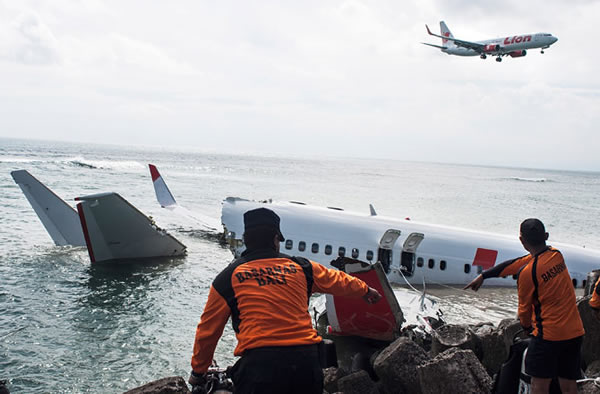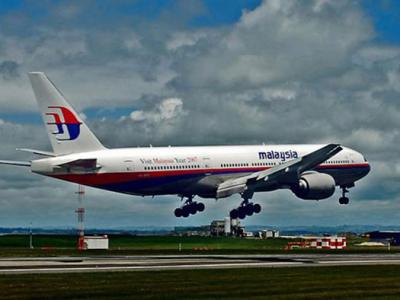Can A Microburst or Wind Shear Crash a Plane?
The pilot of the Indonesian jet that crashed into the sea in Bali on Saturday, says he felt the plane was “dragged” down by wind as he was trying to abort a landing and fly around for a second approach, reported Reuters.
The brand-new Boeing 737 passenger jet, operated by Indonesian budget carrier Lion Air, belly-flopped into the water just short of the runway on the tourist island’s main airport, cracking the fuselage just behind the wings. All 108 passengers and crew survived.
“Investigators and officials are still trying to determine what caused the plane to plunge into the sea, leaving terrified passengers to swim through the water to shore or be plucked to safety by police in rubber dinghies,” reported the AFP. And while investigators were working Monday to to haul the half-submerged wreckage onto the beach, analysts are speculating that the fault may have been weather related.
Can A Microburst or Wind Shear Crash a Plane?
Storms are known to have the potential to send a downdraft or “microburst” of strong wind down onto the ground. If a plane flies through a microburst it will suddenly experience “wind shear,” or change in wind speed and direction.
Between 1964 and 1985 at least 26 civil aircraft crashes involved wind shear, leaving about 500 fatalities and about 200 injuries. In the 1990s, the Federal Aviation Administration (FAA) and NASA worked with several other organizations to develop technology that would warn pilots 10 to 40 seconds ahead of a potential wind shear event.
The modern “Predictive Windshear System” on all Boeing 737s are available below 2,300 feet. Reuters reported that on approach, an audio warning says, “Go around, windshear ahead.”
It is not clear yet if the pilots received this warning or not. But if the pilots do not get the signal at least 10 seconds before approaching a microburst, they will likely not have time to react. As the downdraft of wind spreads outward over the ground it can increase the headwind over the wings of a plane and increase the aircraft’s airspeed. “As the plane passes through the shear, the wind quickly becomes a downdraft and then a tailwind. This reduces the speed of air over the wings, and the extra lift and speed vanish,” explains a NASA website.
Pilots can then get into trouble if they have reduced their airspeed to compensate for the extra sudden lift, but then find themselves without power and sinking quickly to the ground.
“If you have a downdraft which exceeds the performance of the plane, then even if you put on full thrust you will go downhill and you can’t climb out,” Hugh Dibley, a senior official at Britain’s Royal Aeronautical Society, told Reuters. “If your speed is too slow and you hit a downdraft you will just sink. So one question is how much extra air speed the aircraft was carrying.”
Answering that question however may take time. Transport ministry spokesman Bambang Ervan told AFP that the investigation into the cause of the crash could take two to three months to reach a preliminary conclusion.
Apr 15, 2013 09:42 AM ET by Christina Reed












